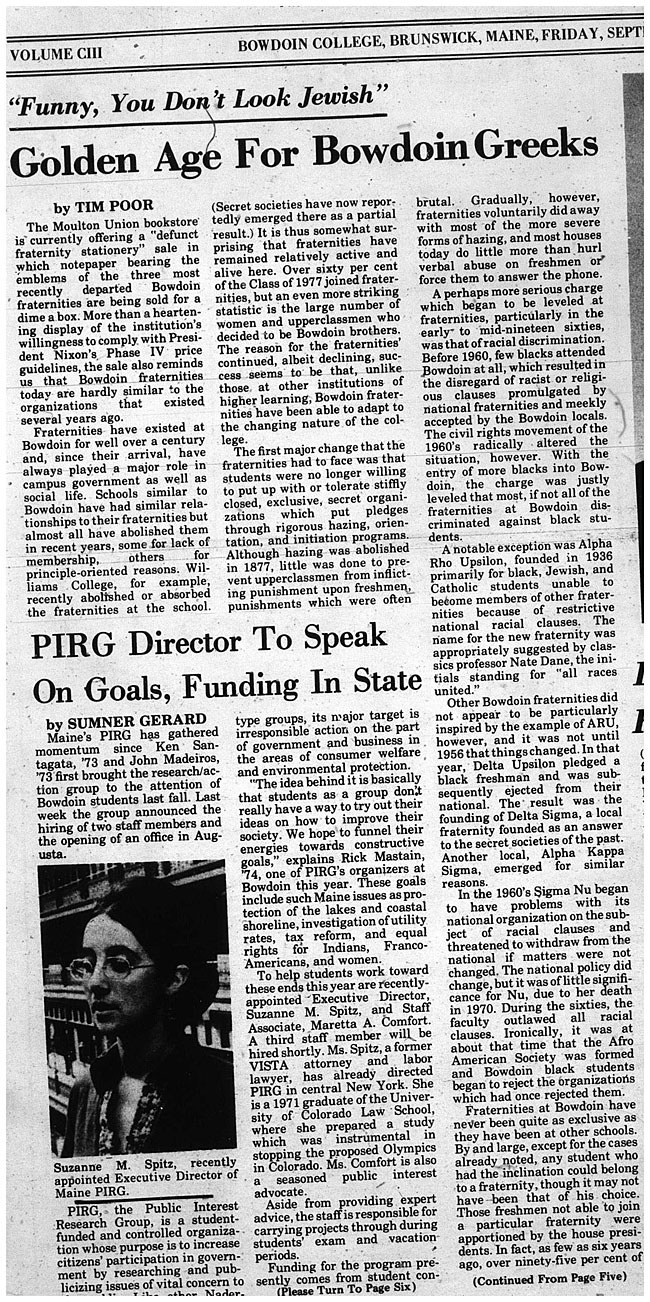Before they were phased out, beginning in the late 1990s, fraternities were an important part of Bowdoin’s social life. This article, which outlines the history of Greek life at the College, ran on the front page of the Orient on September 28, 1973 (Document AW, 49). It notes, “fraternities at Bowdoin have never been quite as exclusive as they have been at other schools. By and large…any student who had the inclination could belong to a fraternity.”
Even before the advent of coeducation at Bowdoin, however, there were some flaws in the fraternity system: “most, if not all” Bowdoin fraternities discriminated against black, Catholic, and Jewish students, in part as a result of the national fraternities’ regulations. A local fraternity, Alpha Rho Upsilon (whose letters were chosen to stand for “All Races United”), was founded in 1936 in response to this exclusion.
While over 95% of the Bowdoin student body was composed of fraternity brothers in the late sixties, by 1971, only 50% of freshmen joined a fraternity. In the late 1970s, however, years after this article’s publication, fraternity membership once again rose, and comprised a solid majority of the student body.
The article notes, “coeducation presented the most serious threat to the fraternities’ dominance at Bowdoin.” At the time of this article’s writing, “most fraternities” accepted women, and “a large percentage of women” chose to join them. Even so, the very word “fraternity” suggests some fundamental incompatibility with a coeducational institution, particularly since there were no sororities on campus. Although women students did pledge as brothers, they were often limited to local or social memberships rather than full voting memberships.
The essentially exclusive nature of fraternities was an important factor in the College’s March 1997 decision to phase them out.

